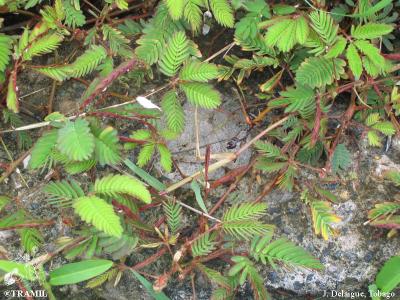hoja fresca y raíz, infusión o decocción, vía oral1
De acuerdo con la información disponible:
El uso para dismenorrea se clasifica como REC con base en el empleo significativo tradicional documentado en las encuestas TRAMIL y la información científica publicada.
Por el riesgo que la dismenorrea obedezca a problemas de salud mas complejos (endometriosis, miomas, enfermedad inflamatoria pelvica, infección de transmisión sexual, embarazo ectópico, tumores, entre otros), se recomienda una valoración médica inicial. El uso de este recurso debe ser considerado como complementario al tratamiento médico, salvo contraindicación.
En caso de que se observe un deterioro del paciente o que el padecimiento persista por más de 5 días, debe buscar atención médica.
No usar durante el embarazo, la lactancia ni en niñas menores de 12 años.
Contra menstrual cramps (dismenorrea):
preparar una decocción o infusión con 5 gramos de hojas y raíz en 4 tazas (1 litro) de agua. En caso de decocción hervir 10 minutos en recipiente tapado. Para la infusión, agregar el agua hirviendo a los 15 gramos de hojas y raíz y tapar. Dejar enfriar, colar (filtrar) y beber 1 taza 3 veces al día durante 3 a 5 días máximo.
Ninguna preparación debe guardarse por más de 24 horas ni fuera de refrigeración.
1 DELAIGUE J, 2005
TRAMIL survey. UAG & PRDI, Tobago House of Assembly, Scarborough, Tobago.
2 APPLEWHITE P, 1973
Serotonin and norepinephrine in plant tissues. Phytochemistry 12(1):191-192.
3 GUPTA MP, Arias TD, Correa M, Lamba SS, 1979
Ethnopharmacognostic observations on Panamanian medicinal plants. Part I. Q J Crude Drug Res 17(3/4):115-130.
4 TSURUMI S, ASAHI Y, 1985
Identification of jasmonic acid in Mimosa pudica and its inhibitory effect on auxin- & light-induced opening of the pulvinules. Physiol Plant 64(2):207-211.
5 ATAL CK, SRIVASTAVA JB. WALI BK, CHAKRAVARTY RB, DHAWAN BN, RASTOGI RP, 1978
Screening of Indian plants for biological activity. Part. VIII. Indian J Exp Biol 16:330-349.
6 SEAFORTH C, ADAMS C, SYLVESTER Y, 1982
A guide to the medicinal plants of Trinidad and Tobago. CSC (82) NP7 London, England: Commonwealth Secretariat.
7 TANGENDJAJA B, WILLS R, 1980
Analysis of mimosine & 3-hydroxy-4 (1H)- pyridone by high-performance liquid chromatography. J Chromatogr 202(2):317-318.
8 NGO BUM E, DAWACK DL, SCHMUTZ M, RAKOTONIRINA A, RAKOTONIRINA SV, PORTET C, JEKER A, OLPE HR, HERRLING P, 2004
Anticonvulsant activity of Mimosa pudica decoction. Fitoterapia 75(3-4):309-314.
9 GANGULY M, DEVI, N MAHANTA R, BORTHAKUR MK, 2007
Effect of Mimosa pudica root extract on vaginal estrous and serum hormones for screening of antifertility activity in albino mice. Contraception 76(6):482-485.
10 CHANDRASHEKAR DK, MANTHALE DM, 2012
Invention of analgesic and anti-inflammatory activity of ethanolic extract of Mimosa Pudica Linn leaves. J of Biomedical and Pharmaceutical 1(1):36-38.
11 BHAKUNI S, DHAR ML, DHAR MM, DHAWAN BN, MEHROTRA BN, 1969
Screening of Indian plants for biological activity. Part II. Indian J Exp Biol 7:250-262.
12 MOLINA M, CONTRERAS CM, TELLEZ-ALCANTARA P, 1999
Mimosa pudica may possess antidepressant actions in the rat. Phytomedicine 6(5):319-323.
13 VIJAYASARATHY V, SHARMA L, PRAKASH A, 1981
Indigenous drug treatment for hemmorhoids. Probe 20(4):285-287.
14 AGRAWAL RC, KAPADIA LA, 1982
Treatment of piles with indigenous drugs-pilex tablets and ointment along with styplon. Probe 21(3):201-204.
15 VAIDYA GH, SHETH UK, 1986
Mimosa pudica (Linn.) its medicinal value and pilot clinical use in patients with menorrhagia. Anc Sci Life 5(3):156-160.
16 NORTON S, 1979
Anti-fertility activity of leaves of Mimosa pudica in early pregnancy of albino rats. Indian J Zool 6(2):89-93.


